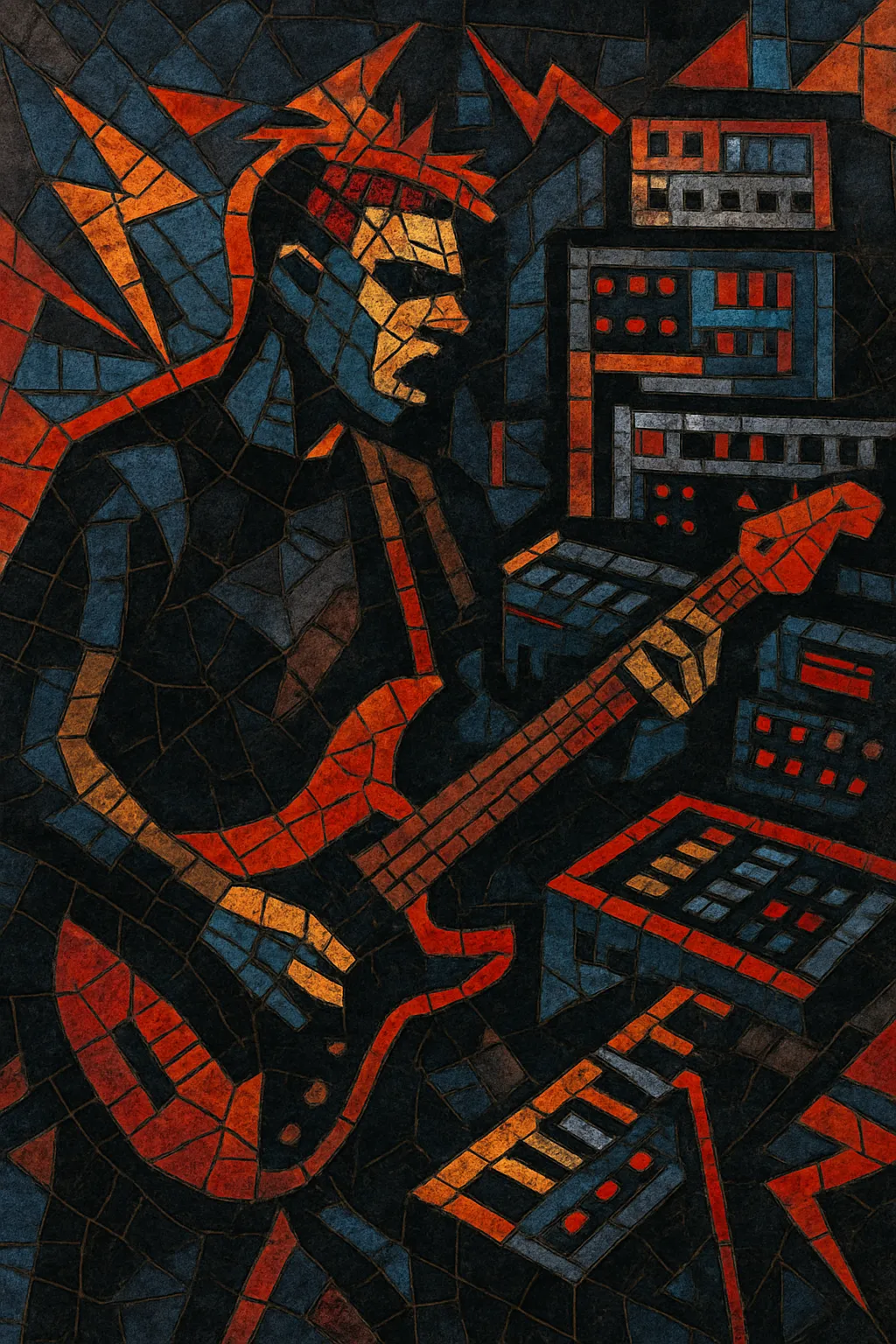
Electropunk fuses the confrontational energy and DIY ethos of punk with the timbres and machinery of electronic music. Instead of guitars and live drums, it leans on aggressive synthesizers, drum machines, samplers, and effects, delivering short, high-impact songs with shouted or sneered vocals.
The sound is raw, minimal, and often deliberately abrasive: distorted basslines, square- and saw-tooth leads, clipped claps and snares, and overdriven mixes that prize attitude over polish. Tempos typically range from mid-tempo stomp to frenetic club pace, and arrangements favor tight verse–chorus forms, sudden breaks, and noise-washed codas. The aesthetics are anti-virtuosic, performance-art friendly, and intensely physical—made to be felt as much as heard.
Electropunk coalesced in the late 1970s in the United States as punk bands began replacing guitars with synthesizers and drum machines. Acts such as Suicide (New York) and The Screamers (Los Angeles) pioneered a stark, electronics-first approach that kept punk’s minimalism and intensity while embracing synths, tape loops, and primitive rhythm boxes. This overlapped with the edges of no wave and post-punk, positioning electropunk as a noisy, performance-art-leaning counterpart to emerging synth-pop.
Through the 1980s, a cross-pollination with post-punk, minimal synth, and the early EBM/industrial scenes (including German groups like DAF) pushed the music toward tougher, body-music rhythms and colder timbres. The scene remained largely underground, circulating via independent labels, cassette culture, and club networks rather than mainstream channels.
Affordable samplers and software in the 1990s sharpened electropunk’s edges, encouraging harsher distortion, faster tempos, and collage aesthetics that would also inform digital hardcore. In the early 2000s, a new wave of artists (often adjacent to electroclash and dance-punk) revived the electropunk attitude—particularly in North America and France—mixing club-floor momentum with punk abrasion and subversive performance.
Electropunk persists as a flexible toolkit—part club, part noise, part punk. Its DNA appears in dance-punk revivals, indie-electronic hybrids, and aggressive club styles. The internet era amplified its DIY distribution, while live shows continue to favor confrontational vocals, stripped-down gear, and a sweaty, participatory atmosphere.
Use one or two aggressive analog-style synths (for bass and lead), a drum machine or drum software with punchy, distorted samples, and a simple sampler or noise source. Keep the rig minimal to encourage immediacy and performance.
Aim for 120–150 BPM. Start with a four-on-the-floor or a stomping half-time kick; place snare/clap on 2 and 4 or slightly ahead for urgency. Use 16th-note hi-hats with occasional stutters and open-hat accents to create friction. Insert abrupt dropouts and noise bursts to mimic punk’s stop–start dynamics.
Favor one- or two-chord vamps (minor keys and modal flavors like natural minor or Phrygian work well). Build basslines from short, repetitive riffs with octave jumps and syncopation. Keep leads terse—hooky, shouted motifs over sustained drones or siren-like sweeps.
Drive everything: saturate the drum bus, overdrive the bass synth, and use bitcrushing or ring modulation for moments of abrasion. Choose square and saw waves, hard envelopes, and resonant low-pass filters. Use gated reverbs or short slapbacks to keep space tight while retaining aggression.
Deliver vocals as shouts, chants, or spoken sneers; double-track for thickness. Lyrics should be direct, socio-political, and sardonic—short lines with memorable slogans. Call-and-response gang vocals amplify the confrontational feel.
Keep songs brief (2–3 minutes). Structure as intro–verse–chorus–break–chorus; include a sudden noise interlude or beat kill. On stage, prioritize physicality: minimal gear, maximum movement, and raw vocal delivery. Embrace imperfection—clip the meters a little; let the edges show.

